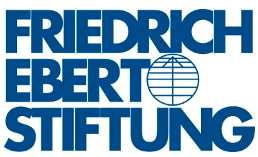Investing in universal early years education pays for itself
Extending high-quality provision to those on low incomes brings biggest benefits
18 July 2023
High-quality, universal early years education is likely the highest-returning investment a government can make. These high returns come largely from improving social and economic outcomes for low-income children and their parents. The returns are so high that this investment pays for itself even when funded entirely through borrowing. The current, limited funding offer, where mostly middle and higher-income families gain 30 free hours of childcare, restricts the benefits to both society and the public finances. Ensuring every child has guaranteed access to early years education will lead to higher earnings, more growth and the Treasury gaining money in the long run.
In the March Budget, Jeremy Hunt announced the 30 free hours offer would be expanded to cover children from nine months to the start of school by 2025. The full offer of support is, however, only available where both parents are working at least 16 hours a week at the minimum wage and where neither parent earns more than £100,000. This excludes the low-income children that could benefit the most from publicly funded early years education. And, by limiting the offer to 30 hours a week for 38 weeks a year, it hinders the ability of (mostly) mothers to work full-time and progress in their career. While theoretically, low-income families on universal credit can also claim up to 85% of childcare costs, in practice, the complexity of claiming and the low amounts available mean that only a quarter of eligible families with children aged 0 – 4 actually claim it.
Our analysis shows that the 30 free hours offer for families with children under five years old benefits richer parents and excludes almost all of those on the lowest incomes. While around 70% of high-income parents will gain access to the expanded 30 free hours early years education offer, only around 2% of the poorest 10% will.
This is perverse – the returns for investing in high-quality, early years education are highest for children from lower income backgrounds. They are, by contrast, much lower for children from higher income backgrounds. Limiting the 30 free hours early years offer to higher income families reduces the beneficial impact on earnings, economic growth and, consequently, tax revenues for the Treasury.
Low-income children benefit the most from high-quality early years education because there is a larger difference in the likely learning opportunities they receive in their home environment compared with that offered by professional providers. Low-income parents have fewer material resources to invest in their children, and the stresses of not having enough money also reduces the psychological resources parents have to draw on.
There is extensive evidence that stark inequalities in outcomes between advantaged and disadvantaged children emerge before the age of five. It is more cost effective to invest in the skills of lower income children earlier in life to stop these gaps from forming in the first place. It is far more difficult – and expensive – to try to narrow these gaps later.
More broadly, investing in early years education is one of the highest returning, large-scale investments a government can make. It is an investment in human capital. High-quality early years education both builds skills earlier (leading to longer returns over time) and provides the platform for absorbing skills later in life. Various estimates place the benefits of early years education at 7 to 1, or higher. By contrast, infrastructure projects are deemed to have very high returns if their returns are greater than 4 to 1.
Current accounting definitions do not adequately account for these higher returns. The Treasury’s definition of capital expenditure is biased toward expenditure on “fixed assets” and effectively embody an “anti-human” bias in investment. The Treasury’s own accounting procedures could be adjusted to allow for investment in early years education to be counted as (human) capital expenditure. While the exact demarcation of what constitutes human capital investment and current expenditure are to be decided, the high returns associated with early years education mean it is a prime candidate for being designated as capital expenditure.
Modelling costs and benefits
To analyse the case for borrowing to invest in early years education, we’ve modelled the fiscal costs and benefits of funding a universal early years offer entirely through an index-linked gilt (a government bond whose return is not eroded by inflation). This offer runs from ages one through four years old. We do not consider the wider societal benefits in this modelling, which are substantial. Our aim here is to show only the fiscal benefit of investing in early years education, to clearly make the case that this could be accounted for as capital expenditure, and thus could be funded through borrowing. All costs and benefits are calculated in real terms.
We set early years education costs at £8.94 per hour for one and two year olds (in line with what is paid in the maintained sector) and £8.23 an hour for three to four year olds. This is substantially greater than the current hourly rate of £5.76 and £5.07 per hour; it was chosen to reflect the greater cost of a high-quality early years education offer. We then calculate the total cost of this when offered for 40 hours a week, 48 weeks a year. This leads to a total cost of around £65,000 from ages one to four.
We calculate how much this would cost when funded through borrowing through an index-linked bond that pays a 1% real return above inflation. This is far above the current 0.125% rate for inflation-linked bonds that have been recently offered by the Treasury. We calculate the cost of paying these bonds off when a child reaches 60. This leads to a total cost of around £105,000 per child.
We model the benefits of universal early years education by, where possible, using results from studies that measure these returns and that differentiate between the effects on low, mid and high-income children. We directly model the effects on maternal employment and hours worked based upon how many hours the mothers of older children work. We use conservative parameters within the modelling and so view the results as likely to be an underestimate of the fiscal benefits of investing in early years education.
We model the fiscal benefits (in terms of taxes received from higher earnings and lower public expenditure) of high-quality early years education from:
- Maternal employment. A lack of available early years education reduces the employment rate of mothers. Mothers see a large fall in employment rates from the birth of their first child. High-income parents, who are more likely to be able to afford early years education, see less of a fall in maternal employment
- Maternal earnings. The current lack of early years education not only limits the ability of mothers to work but also to limits progress in their careers. Universal early years education allows mothers to both work longer hours today and earn more tomorrow if they wish. These higher earnings can then be taxed.
- Child earnings (as adults). Early years education helps children to gain skills in early years that allow them to get better jobs with higher wages as adults. The earnings benefits for high-income children are, however, much lower.
- Child employment rates (as adults). Children who receive early years education are also more likely to be employed in adulthood.
- Productivity. Early years education leads to an increase in university graduation rates that, in turn, leads to higher economy-wide productivity, wages, and tax revenue.
- Crime. Early years education helps to reduce the likelihood that children will go on to commit crime as adults. This leads to lower public expenditure on courts and police time.
- Early years education employment impact. Some of the investment into the early years education sector is immediately recouped in the form of higher tax revenue and lower social security expenditure. There is also an employment multiplier that leads to higher tax revenues from other jobs created.
For low-income children, the fiscal benefits are large – we find them in the order of around 2.07:1. This is unsurprising as a consistent finding from the literature (that this modelling is based on) is that low-income children benefit the most from high-quality early years education. At around 38 years old, the tax revenue gained from greater maternal employment, wages etc. exceeds the costs of borrowing to pay for early years education.
Middle-income children see a markedly lower, although still net positive, return from high-quality universal early years provision. The fiscal benefits outweigh the cost at around age 57 and stand at around 1.19:1 in total.
For high-income children, the fiscal benefits do not exceed the costs of borrowing to provide early years education. The government loses about 33p for every pound borrowed to spend on early years education for high-income children. This is because the returns from investing in this support for high-income children and their parents is lower. High-income parents are already more likely to pay for high-quality early years education, leading to lower gains for their children and parents that can already work without the free offer.
However, means-testing early years education so that only low- and middle-income children receive it will not necessarily lead to higher benefits for the Treasury. The more complex and onerous a system is to navigate, the more likely it is that people won’t receive support they are eligible and this seems to be particularly true for low-income households. Excluding higher-income children from a universal early years offer will likely reduce the political coalition that’s needed to support it.
Quality is also likely to be lower in non-universal services. To paraphrase the great social researcher, Richard Titmuss: services for the poor are poor services. To focus narrowly on targeting those on low incomes is an illusory benefit that will not materialise as not all low-income parents will participate, while both service quality and political sustainability will be undermined by the lack of a broad-based coalition of parents in support.
Our benefit estimates are deliberately conservative, while our cost estimates are large with high borrowing costs. Our calculation of the overall fiscal benefits are that the government gains £1.31 in extra revenue for every £1 that is borrowed and then spent on early years education, in line with other studies. We reiterate that the estimated benefits include only the fiscal benefits and do not include societal gains as traditional cost-benefit analyses do. As is noted above, early years education is likely to lead to an increase in cognitive and non-cognitive skills, which would likely drive up innovation, productivity and growth in the long run. This is not included within this modelling.
Universal, high-quality early years education will lead to greater growth and tax revenues in the short and long run. This should be accounted for by OBR forecasts. In the short run, early years education raises maternal employment and wages, and so tax revenues. In the longer run, an increase in child skills, productivity and wages will lead to growth. It is essential that these benefits are captured by the OBR in their forecasts. Underestimating the benefits of (human) capital investments leads to an anti-(human) investment bias in public expenditure, which reduces the long-run economic growth potential of the UK.
Investing in children in their earliest years is one of the highest-returning investments a government can make. This investment will pay for itself over time, even when funded wholly through a (somewhat extortionate) inflation-linked bond. It is crucial that access to early years education is universal to ensure that low-income children, for whom the investment returns are greatest, can access the service. This has the additional benefit of making such an offer durable through the broad political coalition that will support it.
Acknowledgements
This work has been produced with the support of the Association of Education Committees, the Laudes Foundation, and in partnership with Friedrich Ebert Stiftung.

Appendix
Below we document the studies we used to gain parameters in the modelling from. As above, where possible we use the results of high-quality studies that differentiate between the impact on low, mid‑, and high-income children. For the crime outcome, we use the increase in educational attainment to estimate the imputed fall in criminal activity.
We model the effect on maternal labour market outcomes by comparing the earnings, employment status and hours of worked of mothers whose youngest children are aged 12 and under with those whose youngest children are over 12. This builds on existing modelling approaches. We calculate the effects using our own secondary analysis of Understanding Society (for earnings) and the household Labour Force Survey (for employment and hours worked).
Outcome |
Source |
Child employment rate |
|
Child earnings |
Bartik et al. 2014, Bartik et al. 2012, Havnes and Mogstad (2011) |
Maternal employment |
Own modelling |
Maternal earnings |
Own modelling, Andrew et al. 2020 |
University to productivity |
|
Crime |
Photo: iStock






